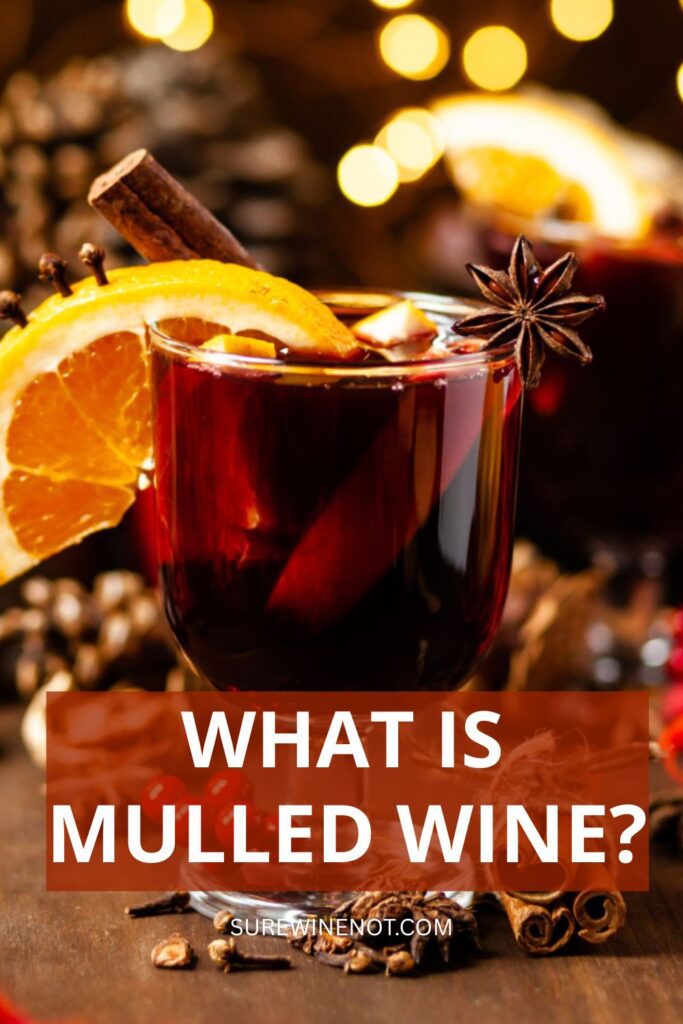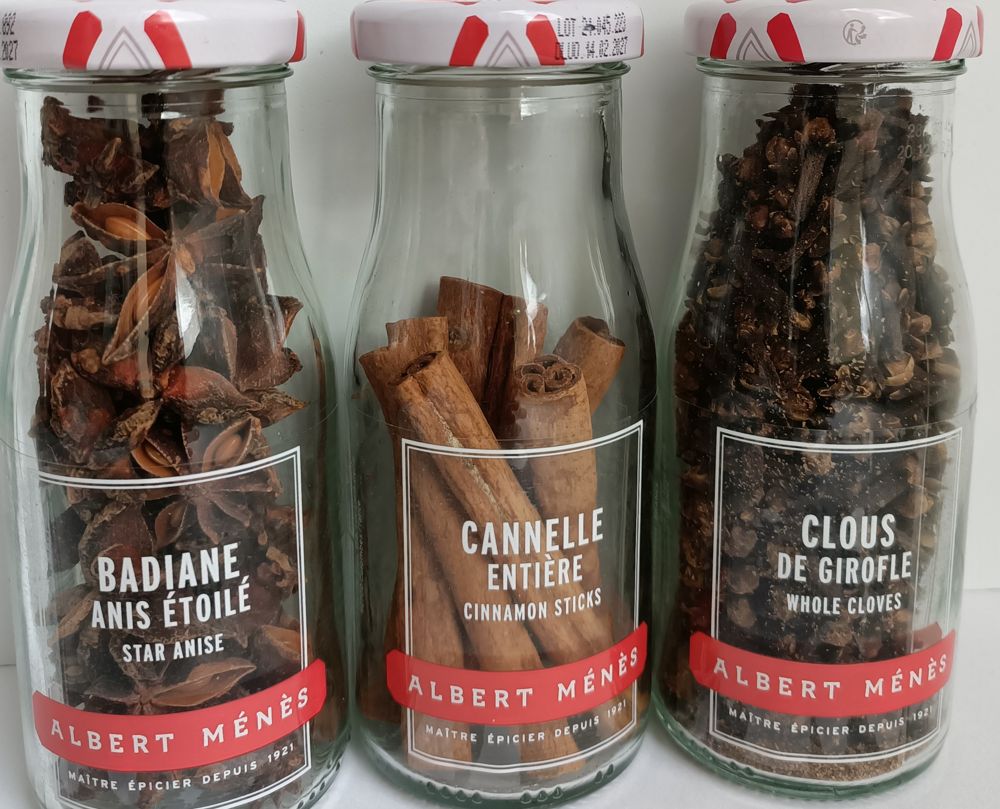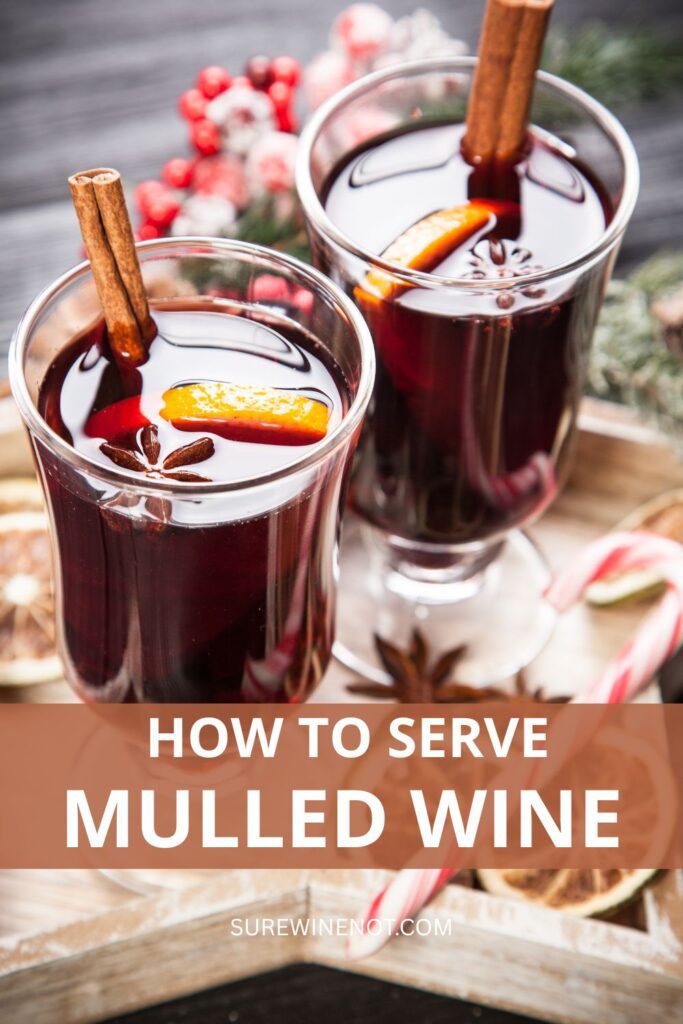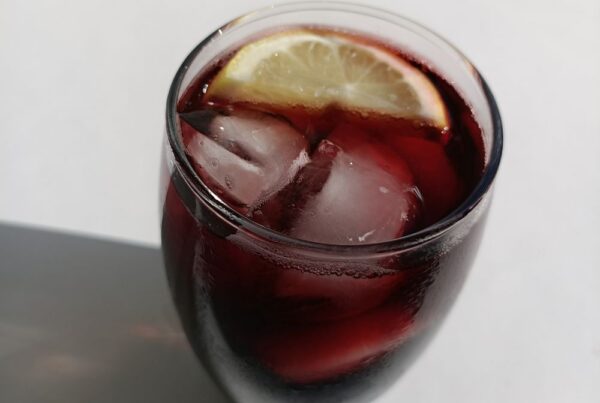In this article, you will learn what mulled wine is and what spices are used to make it.
We will also cover the history of mulled wine, how to serve it and much more.
Key takeaways:
- Mulled wine is a spicy, warmed wine traditionally enjoyed in Europe at Christmas.
- The spices used in a traditional or classic mulled wine are cinnamon sticks, cloves and star anise; however, different countries have different recipes.
Other popular spices that work well include: peppercorns, cardamom pods, allspice berries and nutmeg.

Contents
What is mulled wine?
Mulled wine is a warm drink made by heating red wine with spices like cinnamon, cloves, and star anise. It also usually has sugar and orange slices for extra flavor.
It is a versatile drink with many recipe variations, depending on geography. Ingredients and amounts can be substituted or tweaked to suit your own preferences and tastes.
It is designed for cold weather, especially during the winter holidays. It is served at Christmas markets all over Europe, but it can also be enjoyed at home for winter and festive gatherings. Mulled wine is meant to be comforting, tasty, and served warm.
Why spices are added to mulled wine

Spices are added to wine for many reasons including:
Flavor Enhancement: Spices infuse wine with rich and complex flavors. They bring warmth, depth, and a spiciness that complements the flavors in wine.
Aromatics: Spices release pleasing aromas as they warm in the wine. These fragrant notes, such as cinnamon, cloves, and orange peel are pleasing to most and are often associated with Christmas.
Balance: Spices can help balance the sweetness in wine, especially for recipes where sugar or honey are added. They prevent the flavor from becoming sickly sweet.
Warming: Spices add a warming quality to mulled wine, making it a comforting drink during colder months.
Tradition: Using spices is a time-honored tradition that adds a sense of nostalgia and cultural significance to the drink. Many mulled wine recipes are family recipes that have been passed down through generations.
Customization: Spices can be adjusted to suit personal taste preferences. Some may prefer more cinnamon for a pronounced spiciness, while others may opt for subtler spice blends.
Mulled wine variations across the world
Mulled wine recipes vary from country to country, reflecting cultural traditions and available ingredients. Here’s how mulled wine recipes and names differ around the world:

Glühwein (Germany)
Glühwein is a popular German mulled wine. It’s typically made with red wine and flavored with cloves, cinnamon sticks, and star anise.
Citrus fruits like oranges and lemons are often added for a hint of citrusy brightness.
It’s sweetened with sugar and sometimes fortified with a shot of rum or brandy.
It is served warm and is a staple at the world-famous German Christmas markets.
Vin Chaud (France)
Mulled wine is known as Vin Chaud in France. It’s made using red wine, similar to Glühwein.
French recipes often include spices like cinnamon, cloves, and nutmeg.
Orange zest or orange liqueur like Cointreau are often added.
It’s traditionally enjoyed during the winter months, especially in the Alpine regions for après ski (a drink after skiing).
Glögg (Sweden)
The Swedish version of mulled wine is called Glögg, and it is known for being very spicy.
It’s made with red wine or sometimes a fortified wine like aquavit.
Spices like cloves, cardamom, and ginger are used, as well as dried fruit like raisins.
It’s sweetened with sugar and sometimes flavored with a dash of brandy.
It’s served warm with gingerbread cookies.
Svařák (Czech Republic)
The Czech version of mulled wine is called Svařák. It is usually made with red wine, but sometimes white wine is used too.
It’s flavored with cloves, cinnamon, and often lemon zest. Sugar or honey are used for sweetness.
It is served warm throughout the winter season.
The Netherlands and Belgium
The Dutch and Belgian version of mulled wine is known as bisschopswijn (‘bishop’s wine’).
It is made with red or white wine and flavored with cinnamon, cloves, star anise and orange peels. It can be sweetened with sugar or honey.
Bisschopswijn is drunk warm during the Sinterklaas holidays in December.

History of mulled wine
The origins of mulled wine can be traced back to the ancient Greeks and Romans.
They heated and spiced their wine as a way to make lower-quality wines more palatable and to have a warming drink during cold months of the year.
The practice of making mulled wine then spread across Europe.
In medieval Europe, spiced wines were a popular drink among the upper classes. It was served at feasts and gatherings and special holidays.
Spices like cinnamon, cloves, and nutmeg were prized for their exotic flavors and spices were also a sign of wealth.
During the Middle Ages, mulled wine was also considered medicinal. Spices were believed to have healing properties, and warm wine was thought to cure various ailments.
Best red wines to make mulled wine
Ideally, choose a full-bodied, fruity wine as the spices and fruit will disguise any nuances in a delicate wine like pinot noir.
Zinfandel, Merlot or Malbec will work well, as will Chianti and Rioja.
Best fruit to put in mulled wine
If you don’t have clementine, you can substitute with oranges.
Limes can also be used instead of (or as well as) lemons.
Add a twist to mulled wine

Add a dash of sloe gin, rum or brandy to your mulled wine recipe if you want to give it a stronger kick of alcohol.
What to serve mulled wine in
Mulled wine is enjoyed at Christmas markets in Europe and at cozy winter gatherings all over the world. Serving it in the right way—not just the taste, but how you present it—elevates the experience.
Whether you want to go traditional or modern, the following tips will help you choose how to serve your mulled wine:
Traditional Options
- Glass mugs – Typical for German Christmas markets and other parts of Europe. They tend to be made of thick glass to keep heat in and withstand warmth.
- Ceramic mugs – Also popular choice for European Christmas markets, like Austria and Belgium. These retain heat well and are cozy to hold. It’s also probably the easiest option as most people have these in the cupboard. If you want to make it festive, you could use festive-themed mugs.
Contemporary Options
- Heatproof glass cups (with handles) – These show off the wine’s rich color and spices while staying safe to hold.
- Insulated cups – Ideal for outdoor gatherings or parties. They will keep the wine warm without being uncomfortable to hold. The downside to insulated cups is guests can’t warm their hands with the cup which is part of the allure and enjoyment of a hot drink in winter.
Helpful Tips
- Use mugs or cups with handles to prevent burns or discomfort.
- Avoid using delicate or thin glasses as they may crack if wine is too hot or be too hot to hold.

Easy traditional mulled wine recipe
Ingredients
- 1 Bottle of fruity wine
- 2 Star anise
- 1 Large cinnamon stick
- 4 Cloves
- 1 Clementine
- 1 Lemon
- 4 tbsp Caster sugar
Instructions
- Using a vegetable peeler, peel 2 strips from the lemon and peel all of the clementine.
- Put the red wine, cinnamon, star anise, cloves, lemon and clementine zest and sugar in a large pan. Cook on a low heat for 10 minutes.
- Remove from the heat and cool. Leave to infuse for about 30 minutes.
- To serve, heat without boiling, and pour into mugs or heatproof glasses.






